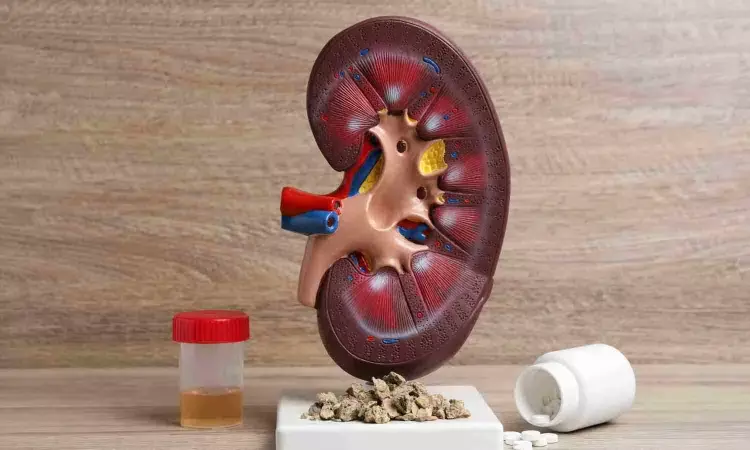- Home
- Medical news & Guidelines
- Anesthesiology
- Cardiology and CTVS
- Critical Care
- Dentistry
- Dermatology
- Diabetes and Endocrinology
- ENT
- Gastroenterology
- Medicine
- Nephrology
- Neurology
- Obstretics-Gynaecology
- Oncology
- Ophthalmology
- Orthopaedics
- Pediatrics-Neonatology
- Psychiatry
- Pulmonology
- Radiology
- Surgery
- Urology
- Laboratory Medicine
- Diet
- Nursing
- Paramedical
- Physiotherapy
- Health news
- Fact Check
- Bone Health Fact Check
- Brain Health Fact Check
- Cancer Related Fact Check
- Child Care Fact Check
- Dental and oral health fact check
- Diabetes and metabolic health fact check
- Diet and Nutrition Fact Check
- Eye and ENT Care Fact Check
- Fitness fact check
- Gut health fact check
- Heart health fact check
- Kidney health fact check
- Medical education fact check
- Men's health fact check
- Respiratory fact check
- Skin and hair care fact check
- Vaccine and Immunization fact check
- Women's health fact check
- AYUSH
- State News
- Andaman and Nicobar Islands
- Andhra Pradesh
- Arunachal Pradesh
- Assam
- Bihar
- Chandigarh
- Chattisgarh
- Dadra and Nagar Haveli
- Daman and Diu
- Delhi
- Goa
- Gujarat
- Haryana
- Himachal Pradesh
- Jammu & Kashmir
- Jharkhand
- Karnataka
- Kerala
- Ladakh
- Lakshadweep
- Madhya Pradesh
- Maharashtra
- Manipur
- Meghalaya
- Mizoram
- Nagaland
- Odisha
- Puducherry
- Punjab
- Rajasthan
- Sikkim
- Tamil Nadu
- Telangana
- Tripura
- Uttar Pradesh
- Uttrakhand
- West Bengal
- Medical Education
- Industry
Understanding 24-Hour Urinary Chemistries: A Key to Assessing Kidney Stone Risk

USA: A recent study published in the American Journal of Kidney Diseases has revealed that higher oxalate, calcium, phosphorus, and sodium levels in urine are linked to increased risk of kidney stones, while higher uric acid, urine volume, citrate, potassium, & magnesium correlate with lower risk.
Dominance analysis revealed three tiers of relative importance among these factors: lower (uric acid, phosphorus & sodium), intermediate (oxalate, potassium & magnesium), and higher (calcium, volume, and citrate).
In Western countries, kidney stones are a common ailment, with a high prevalence and tendency to recur. Most previous studies of the relationship between urinary factors and the risk of kidney stones have either assumed a linear effect of urinary parameters on kidney stone risk or implemented arbitrary thresholds suggesting biologically implausible “all-or-nothing” effects. In addition, not much is known about the impact of urinary factors on kidney stone risk.
Against the above background, Pietro Manuel Ferraro, Section of Nephrology, Department of Medicine, Università degli Studi di Verona, Verona, Italy, and colleagues evaluated the independent associations between urine chemistries and kidney stone formation and examined their magnitude and shape in a prospective cohort study.
For this purpose, the researchers analyzed 9,045 24-hour urine collections from 6,217 Health Professionals Follow-Up Study and Nurses’ Health Studies I and II participants.
The researchers also explored potential non-linear relationships between urinary factors and the risk of forming a kidney stone. For each factor, optimal inflection point analysis was implemented, and dominance analysis was performed to establish the relative importance of each urinary factor.
Exposures included urine volume and pH, and citrate, calcium, oxalate, magnesium, potassium, uric acid, phosphorus, and sodium concentrations.
The main outcome was incident symptomatic kidney stones.
Following were the study’s key findings:
· Each urinary factor was significantly associated with stone formation except for urine pH.
· Higher urinary levels of calcium, oxalate, phosphorus, and sodium were associated with a higher risk of stone formation, whereas, higher urine volume, uric acid, citrate, potassium, and magnesium were associated with a lower risk.
· The relationships were substantially linear for urine calcium, uric acid, and sodium.
· The magnitudes of the relationships were modestly attenuated at levels above the inflection points for urine oxalate, citrate, volume, phosphorus, potassium, and magnesium.
· Dominance analysis identified three categories of factors' relative importance: higher (calcium, volume, and citrate), intermediate (oxalate, potassium, and magnesium), and lower (uric acid, phosphorus, and sodium).
The study's limitations include predominantly white participants and a lack of information on stone composition.
"Urine chemistries have complex relationships and differential relative associations with the risk of kidney stone formation," the researchers concluded.
Reference:
Ferraro, P. M., Taylor, E. N., & Curhan, G. C. (2024). 24-Hour Urinary Chemistries and Kidney Stone Risk. American Journal of Kidney Diseases. https://doi.org/10.1053/j.ajkd.2024.02.010
Dr Kamal Kant Kohli-MBBS, DTCD- a chest specialist with more than 30 years of practice and a flair for writing clinical articles, Dr Kamal Kant Kohli joined Medical Dialogues as a Chief Editor of Medical News. Besides writing articles, as an editor, he proofreads and verifies all the medical content published on Medical Dialogues including those coming from journals, studies,medical conferences,guidelines etc. Email: drkohli@medicaldialogues.in. Contact no. 011-43720751


